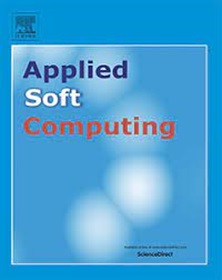A p-ary Choquet-based multicriteria decision-making model for customer-oriented product design scheme selection
IF 7.2
1区 计算机科学
Q1 COMPUTER SCIENCE, ARTIFICIAL INTELLIGENCE
引用次数: 0
Abstract
As an efficient customer-oriented product design tool for converting customer requirements (CRs) into quality characteristics (QCs) of a product, quality function deployment (QFD) is applied to the selection of new product design schemes. However, the effective implementation of QFD is hampered by two fundamental challenges: (a) biases in people’s understanding of customer satisfaction and (b) the ambiguously assessed relationship between CRs and QCs because of the inherent uncertainty in human judgment. Therefore, this paper provides a p-ary Choquet-based multicriteria decision-making model to rank new product design schemes considering customer psychological and risk attitudes. The selection of a new product design scheme is divided into two stages. In the first stage, the -ary Choquet integral converts the objective technical parameters of a new product design scheme into utility, which is the subjective feeling from the perspective of two-factor theory. Then, the integration of 2-additive measures and the Choquet integral is used to account for the redundancy and complementary effects among customer requirements. Finally, a case study of an electric vehicle manufacturing company and a comparison analysis are presented to illustrate the validity of our proposal. The p-ary Choquet-based multicriteria decision-making model realizes customer-oriented product design scheme selection by systematically analyzing customer preferences and bridging the gap between products that are emotionally recognized by customers and those that exhibit excellent performance in terms of functionality and cost.
基于 p-ary Choquet 的多标准决策模型,用于以客户为导向的产品设计方案选择
质量功能展开(QFD)是一种有效的以顾客为导向的产品设计工具,可将顾客要求(CRs)转化为产品的质量特性(QCs),被应用于新产品设计方案的选择。然而,QFD 的有效实施受到两个基本挑战的阻碍:(a)人们对客户满意度的理解存在偏差;(b)由于人类判断本身的不确定性,客户要求和质量特性之间的关系评估模糊不清。因此,本文提供了一个基于 p-ary Choquet 的多标准决策模型,用于对考虑了顾客心理和风险态度的新产品设计方案进行排序。新产品设计方案的选择分为两个阶段。在第一阶段,p-ary Choquet 积分将新产品设计方案的客观技术参数转换为效用,即双因素理论视角下的主观感受。然后,利用 2-附加度量和乔奎特积分的整合来考虑客户需求之间的冗余和互补效应。最后,通过对一家电动汽车制造公司的案例研究和对比分析,说明了我们建议的有效性。基于 p-ary Choquet 的多标准决策模型通过系统分析客户偏好实现了以客户为导向的产品设计方案选择,并在客户情感认可的产品与在功能和成本方面表现优异的产品之间架起了一座桥梁。
本文章由计算机程序翻译,如有差异,请以英文原文为准。
求助全文
约1分钟内获得全文
求助全文
来源期刊

Applied Soft Computing
工程技术-计算机:跨学科应用
CiteScore
15.80
自引率
6.90%
发文量
874
审稿时长
10.9 months
期刊介绍:
Applied Soft Computing is an international journal promoting an integrated view of soft computing to solve real life problems.The focus is to publish the highest quality research in application and convergence of the areas of Fuzzy Logic, Neural Networks, Evolutionary Computing, Rough Sets and other similar techniques to address real world complexities.
Applied Soft Computing is a rolling publication: articles are published as soon as the editor-in-chief has accepted them. Therefore, the web site will continuously be updated with new articles and the publication time will be short.
 求助内容:
求助内容: 应助结果提醒方式:
应助结果提醒方式:


